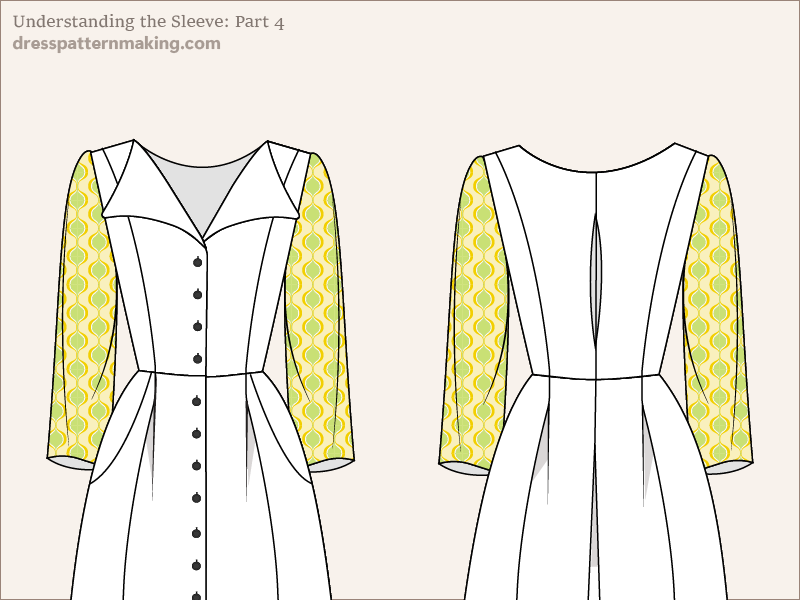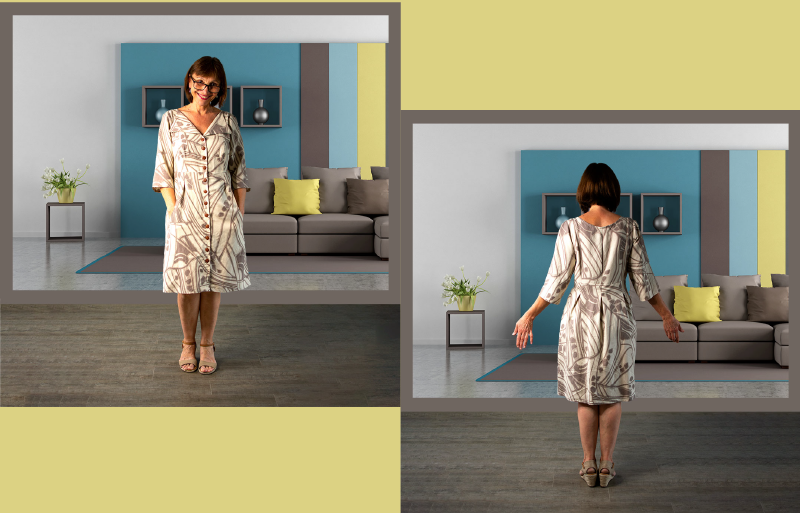Understanding the Sleeve Part 4: Final thought on Standard vs Non-Standard Figures

There are four parts to this article on Understanding the Sleeve and they follow on from each other. This is the final article, Part 4.
Now only some people will have the problem I outlined in Parts 1-3 of this article. If you have a Standard Figure, you won't have that problem.
The Standard Figure
If you have a Standard Figure your Bicep/Cap Height ratio will be within the range so that you will end up with minimum ease in the sleeve cap. So for you, you may have a learned a little bit more about the sleeve than you needed. But you might make patterns or clothes for other people, so it's helpful to really understand the sleeve, rather than get the Cap Height/Bicep ratio right just because you are 'lucky' to have a Standard Figure This still begs the question: if you have a Standard Figure, should you use the Bicep or the Cap Height to create the triangle of the sleeve? Really you could use either, BUT..... In my instructions, we first determine the 'ideal Cap Height' that will result in minimal ease in the Sleeve Cap, and we also mark the actual Cap Height. You can then see if you are going to have too much ease in the sleeve cap. Remember: if you have the Standard Figure, then 2-inches ease in the Bicep will be enough for your sleeve; for your bicep, for your upper arm, and for reaching forward. If you make the sleeve with 2-inches ease in the bicep, using your actual Cap Height but the sleeve isn't comfortable for other reasons (your upper arm, the forward reach), then you don't have the standard figure.
The Non-Standard Figure
When making a sleeve, the first problem with the non-standard figure is that you might not know how much ease you need in the bicep until you make the toile and do a fitting. If you know from experience that you have difficulty with sleeves in the ways I have mentioned, you could just start with 4-inches ease in the bicep instead of 2-inches. Of course you could just start with 2-inches and determine with your toile how much extra ease is needed in the bicep, but then you will need to remake the block. (I think it's just as easy to remake the block than try to make the changes to the original block; you will have to redraw the curve anyway. So the question remains for the non-standard figure. If a (one-piece) Fitted Sleeve Block is supposed to have both minimum ease in the Bicep and and minimum ease in the sleeve cap, and this is impossible for you, do you:
- make a block using your bicep and your Cap Height, resulting in excess ease in the Sleeve Cap (which you can live with, remove in the form of a dart, or put in a seam line and use a two-piece sleeve)
- make a block adding plenty of ease to the bicep (4-5-inches), and using a lower Cap Height (which will flare away from the arm a bit, so will not follow the contours of the arm quite a closely as a Fitted Sleeve should).
The answer is... it's up to you. You could create both, and use whichever is more suitable for the sleeve patterns you are making. Or use one or the other, and make whatever adjustments are necessary when you make the sleeve patterns. E.g. If you are making a puff sleeve and you are using the block with excess ease in the Sleeve Cap, you will need to add less fullness than usual. You will need to take the differences into account when you make your patterns.


